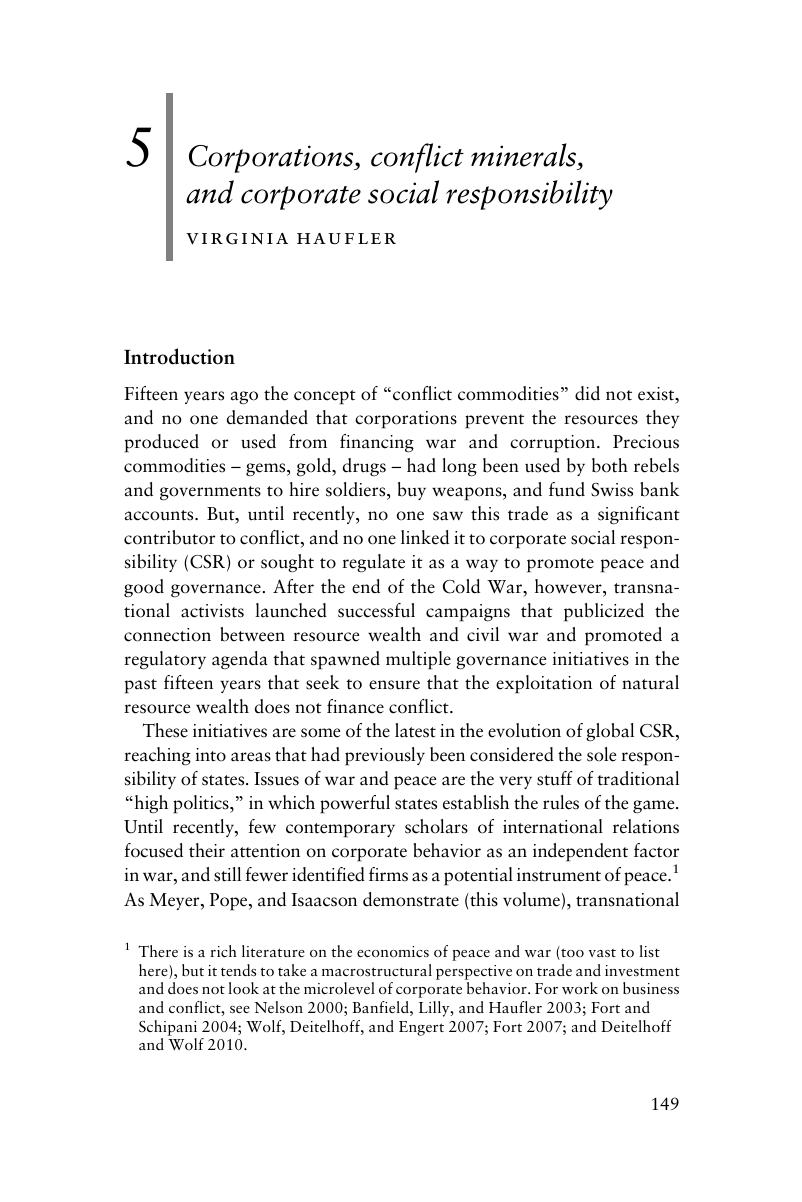Book contents
- Corporate Social Responsibility in a Globalizing World
- Business and Public Policy
- Corporate Social Responsibility in a Globalizing World
- Copyright page
- Dedication
- Contents
- Figures
- Tables
- Notes on contributors
- Book part
- 1 The social regulation of the economy in the global context
- Part I Legitimation and contestation in global corporate responsibility
- Part II Social construction and field formation in global corporate social responsibility
- 5 Corporations, conflict minerals, and corporate social responsibility
- 6 The institutionalization of supply chain corporate social responsibility: field formation in comparative context
- 7 Sustainability discourse and capitalist variety: a comparative institutional analysis
- Part III Corporations’ reaction to global corporate social responsibility pressures
- Part IV The impact of global corporate social responsibility pressures on corporate social responsibility outcomes
- Index
- References
5 - Corporations, conflict minerals, and corporate social responsibility
from Part II - Social construction and field formation in global corporate social responsibility
Published online by Cambridge University Press: 05 May 2015
- Corporate Social Responsibility in a Globalizing World
- Business and Public Policy
- Corporate Social Responsibility in a Globalizing World
- Copyright page
- Dedication
- Contents
- Figures
- Tables
- Notes on contributors
- Book part
- 1 The social regulation of the economy in the global context
- Part I Legitimation and contestation in global corporate responsibility
- Part II Social construction and field formation in global corporate social responsibility
- 5 Corporations, conflict minerals, and corporate social responsibility
- 6 The institutionalization of supply chain corporate social responsibility: field formation in comparative context
- 7 Sustainability discourse and capitalist variety: a comparative institutional analysis
- Part III Corporations’ reaction to global corporate social responsibility pressures
- Part IV The impact of global corporate social responsibility pressures on corporate social responsibility outcomes
- Index
- References
Summary

- Type
- Chapter
- Information
- Corporate Social Responsibility in a Globalizing World , pp. 149 - 180Publisher: Cambridge University PressPrint publication year: 2015
References
- 4
- Cited by



